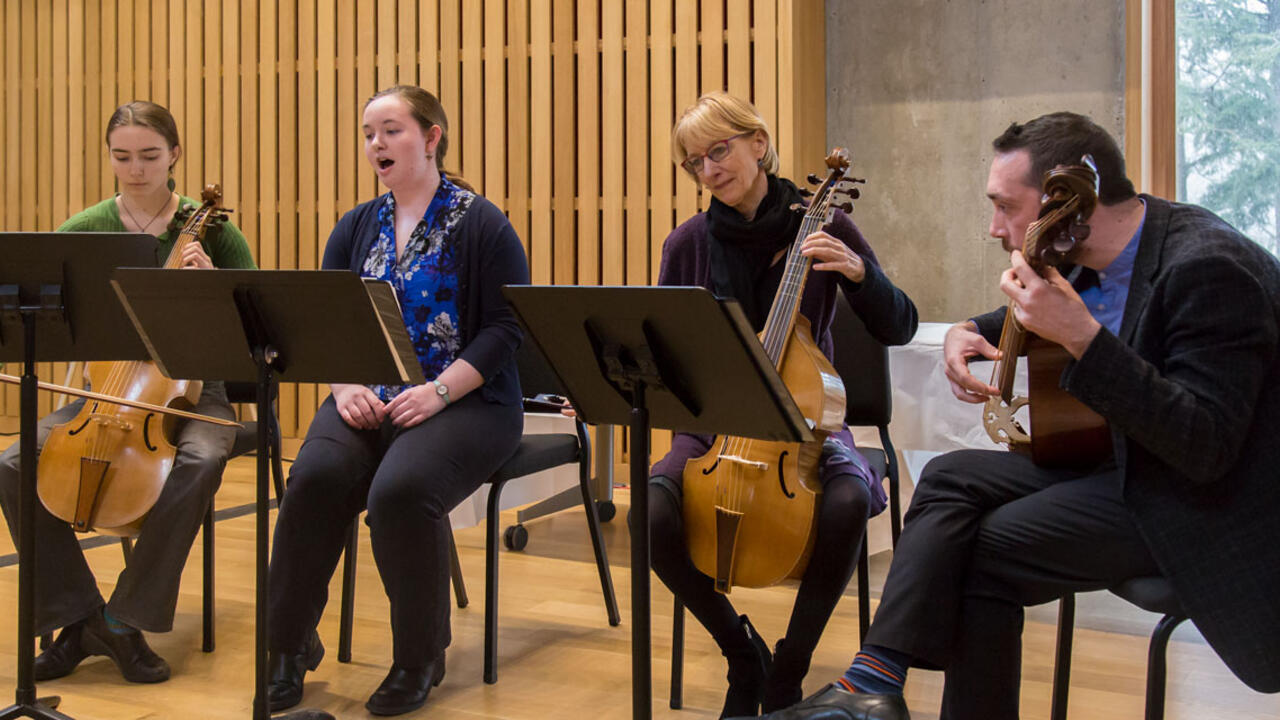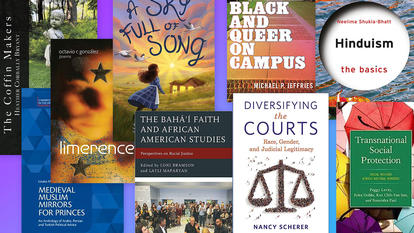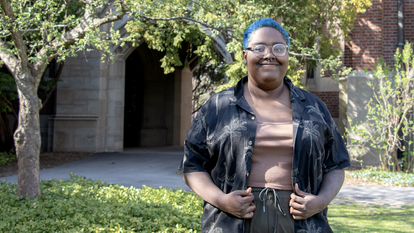Symposium Celebrates Four Years of Wellesley’s Innovative Blended Learning Initiative

Wellesley’s Blended Learning Initiative marked four years of innovation with a two-day symposium, titled “Shifting (the) Boundaries: Blended Learning, Digital Humanities, and the Liberal Arts.”
The event, held April 6 and 7, included 30 speakers from Wellesley and invited speakers from institutions around the country. It featured panel discussions about a variety of blended learning and digital humanities projects, such as an Italian online course, a virtual reality evolutionary anatomy lab, and a summer course in Iceland that integrated digital tools and field research. The more than 100 attendees included Wellesley students, faculty, and staff as well as visitors from 25-plus institutions.
Founded in the fall of 2014, the Blended Learning Initiative supports the innovative use of technology in teaching and has facilitated projects for more than 50 courses in the humanities and humanistic social sciences. Evelina Gužauskytė, faculty director of the initiative and associate professor of Spanish, and David O’Steen, associate director of the initiative, worked with the Office of the Provost and the Library and Technology staff to launch the initiative with an $800,000 grant from the Andrew W. Mellon Foundation.
The initiative’s success at Wellesley “encompassed using a variety of digital platforms and tools to facilitate hands-on learning, collaborative projects, and inter-institutional co-teaching projects,” said Gužauskytė. “Our emphasis has been less on delivery of content and more on enhancing the quality of student engagement with the material.”
More than 50 faculty members, representing 21 academic departments in the humanities and interdisciplinary subjects, have used blended learning to “reinforce the core goals of humanistic inquiry that are centuries old but also to allow us to situate our teaching and scholarship in today’s fast-paced and networked digital age,” said Gužauskytė.
Claire Fontijn, the Phyllis Henderson Carey Professor of Music, Laura Jeppesen, senior music performance faculty in viola da gamba, and Thomas Hodge, professor of Russian, and his student Aubrey Simonson ’19 took part in the symposium’s opening panel, about combining music and literature with cutting-edge technologies.
In their blended course in Renaissance music, Fontijn and Jeppesen incorporated materials found at the International Music Score Library Project (IMSLP), a research digital repository of musical scores; a tuning app for the viola da gamba (which has six strings and eight frets, and requires frequent tuning); and a website devoted to Isabella d’Este, a significant figure of the Italian Renaissance who played the viola da gamba and was a patron of the arts.
While learning to play the viola da gamba, Fontijn said, her students “were well served by the digital tools.”
For Russian 251, a survey of Russian literature that includes Anna Karenina, Hodge used virtual reality technology. He and Simonson created a virtual simulation of the interior of the kind of train car that would have been in operation on the St. Petersburg-Moscow line in 1873, when the novel is set.
Simonson created the simulation with 3D modeling software, 1870s manufacturing schematics, and a diagram of the car sketched by Vladimir Nabokov, author and the founder of the Russian Department at Wellesley. (Nabokov drew the sketches for his lectures at Wellesley on Anna Karenina.)
Wearing a special headset, students become immersed in the train car. With computer imagery, “we can craft experiences for students in the same way professors do within a lecture in a classroom environment,” Simonson said.
Hodge added that using technology to teach about Anna Karenina can lead to “productive insights and generate more active engagement with the novel.”
Photo: Ariana Carter ’18, Kisha James ’ 21, Laura Jeppesen , and Andrew Areci, director of Wellesley’s Collegium Musicum, perform with the viola da gamba at the Blended Learning Initiative symposium.



